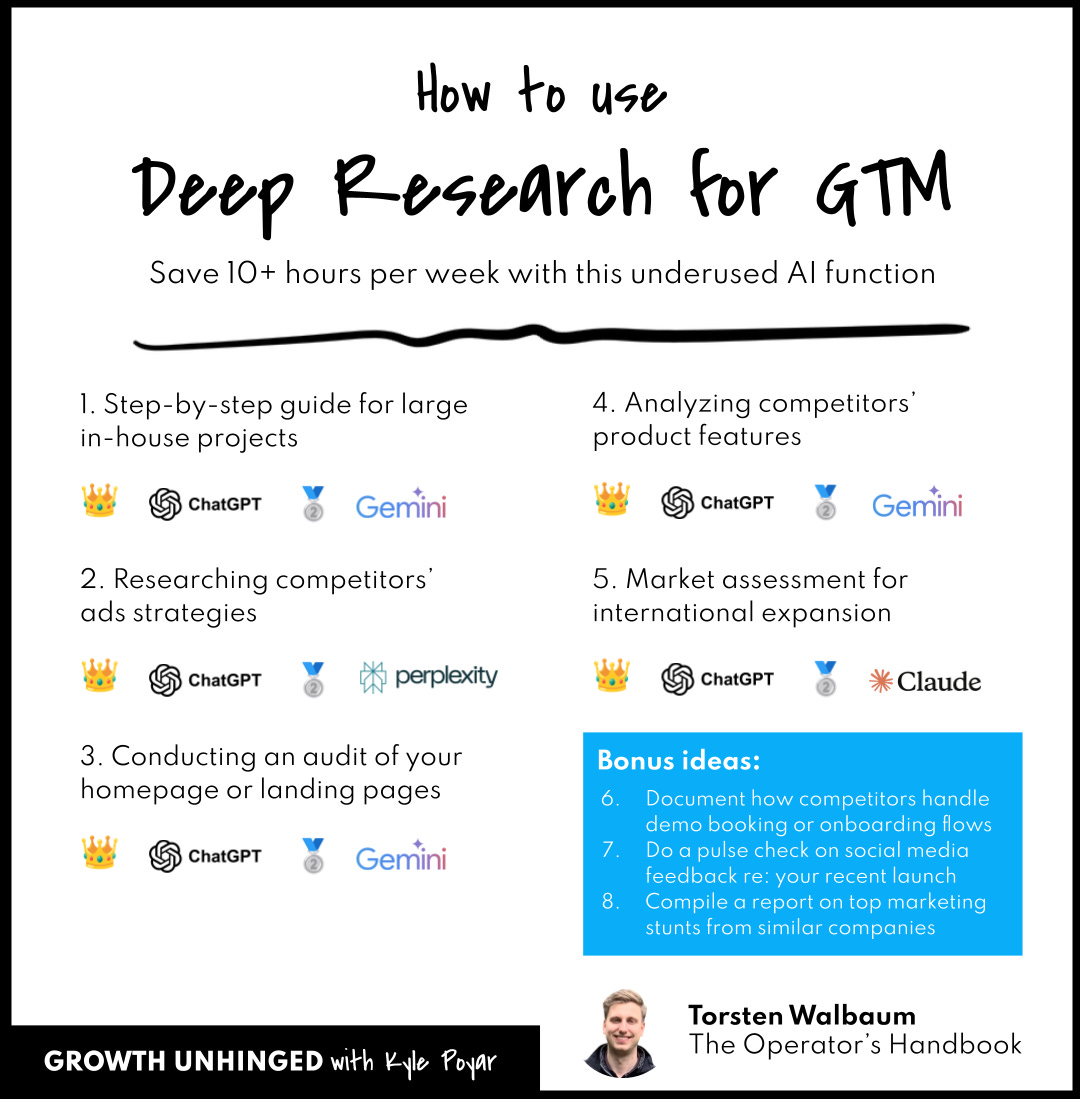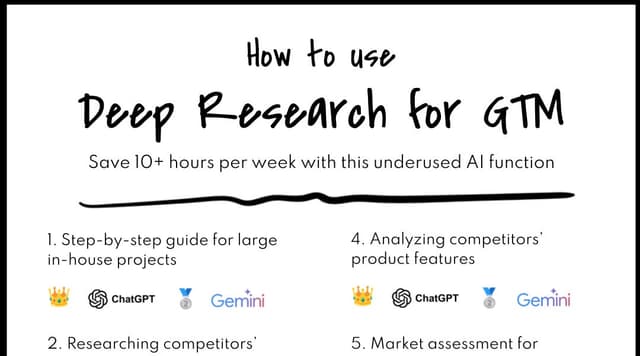How to get the best results from Deep Research
1. Point the research agent to high-quality sources
There are two simple ways to fix this, though:
• Option 1: Specify in the prompt what kind of sources to prioritize (e.g. primary sources like government data over secondary ones like news articles)
• Option 2: Use an AI model like GPT-5 or Claude Opus to create a list of specific high-quality sources and then feed that into Deep Research (you’ll see this in action in example #5 below)
In addition, if you want more transparency, you can also ask the research agent to:
-
Always provide in-text citations for any claim it makes
-
Add a table to the report that lists all sources and shows which source was used for what, what type of source it is, what year the data is from, etc.
-
Outline where different sources disagree (esp. when it comes to data) and what the reason might be (e.g. differences in methodology)
2. Provide context to get customized insights
💼 Where you work and how your company operates
🎯 What exactly you’re trying to achieve
🚧 [If applicable] What constraints you’re facing
To make things easier, I’ve started asking AI for its take (GPT-5 and Claude Opus both do a great job):
I'm planning to generate a Deep Research report on [X] in order to [Y]. What context should I provide so that I get a customized, actionable report? Pretend you have no context from any prior conversations.
3. Ask for a research plan before getting started

4. Specify an easy-to-digest report format
Just ask to:
• Include a summary at the beginning of the document and every individual section
• Start with the key insights or recommendations before going into details
• Use overview tables or visuals instead of text blocks where appropriate
Putting all of the tips from above together and adding a few optional ones, this is what an effective Deep Research prompt looks like.
# Goal: State 1) what you’re ultimately trying to accomplish, and 2) what exactly you want the AI to do. Example: We want to build an account score to inform account allocation to SDRs and prioritize which accounts we reach out to. The desired model will assign 1) a firmographic fit score (i.e. "Is this company generally a good fit?”) as well as 2) an intent score (i.e. "Is this account currently in the market / likely to buy?") to each account. # Context: Include all relevant context for the request that’s not already in your Project. Example: We’re currently focused on the US market only. Our GTM and data stack consists of Salesforce, Marketo, Outreach, dbt and Snowflake; we’re open to buying intent data sources. Explainability of the model and scores is key # [Optional] Content: Specify what you want included in the final output, e.g. comparisons, SQL code snippets, specs for Salesforce custom objects etc.. Example: <content> Please cover, at a minimum: 1) A detailed “build vs. buy” analysis and recommendation, 2) An overview of the various approaches for building this in-house, 3) How to operationalize the account score between Marketing and Sales, 4) How we can provide visibility for sales reps into how the scores were derived </content> # [Optional] Style: Define the format of the report. This is best included in the Project custom instructions as it can usually be the same for each research task. Example: <style> Follow the Pyramid Principle: State key takeaways or recommendations first, then add supporting arguments and data where appropriate. When you give a recommendation, make sure you explain exactly how you arrived at it. Use bullet points, overview tables and other formatting to make the report easy to parse. </style> # [Optional] Sources: Specify which sources the AI should prioritize and/or how it should document them. Example: For tool comparisons, focus on assessments from leading industry blogs or practitioners instead of claims from the companies themselves # [Optional] Instructions: Provide misc. instructions (e.g. specific methodology or steps you want the AI to follow). Example: Please ask for any additional context you need before you proceed

TL;DR: Overall, ChatGPT is the best general-purpose Deep Research tool, especially with the recent release of GPT-5 (no more model switching) and Agent Mode (ability to properly interact with websites).
How to choose the right Deep Research tool for your use case
Practical GTM use cases for Deep Research

